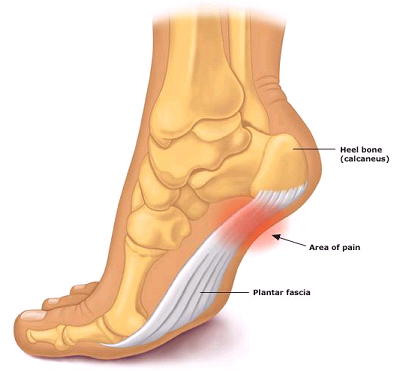 Congratulations to all of you who ran, jogged or walked earlier this month, in the nation’s largest 15k – The Gate River Run of 2014!!! Many of my clients, friends and family members participated either for their first time ever or as a repeating tradition, and I am always so excited to hear people’s average pace/mile, final result times, and how they felt before, during, and after the race. Many of us (walker, jogger or runner) often admit to feeling joint stiffness in the hips, knees and ankles – especially a few days after a race. And most people don’t even think about stretching much after crossing the finish line. However, some of the most common injuries occur when we do not take the proper steps to recovering post-exercise.
Congratulations to all of you who ran, jogged or walked earlier this month, in the nation’s largest 15k – The Gate River Run of 2014!!! Many of my clients, friends and family members participated either for their first time ever or as a repeating tradition, and I am always so excited to hear people’s average pace/mile, final result times, and how they felt before, during, and after the race. Many of us (walker, jogger or runner) often admit to feeling joint stiffness in the hips, knees and ankles – especially a few days after a race. And most people don’t even think about stretching much after crossing the finish line. However, some of the most common injuries occur when we do not take the proper steps to recovering post-exercise.
When Your Feet Start Talking to You
 Pain develops in the sole of the foot (typically the front part of the heel, aka the calcaneus). It mostly hurts in the morning when you first get out of bed, and then may ease up after a while, but then you feel like you can’t walk for too long without feeling a lot of pain. I hear these common symptoms quite often, mainly from people who wear dress shoes and flip flops, have a job or lifestyle that requires you to stand on hard flooring (concrete, tile, hard wood, etc). This kind of pain should not be ignored. There are structures in your feet that play a huge role in getting you from point A to point B, so you must be diligent in taking the proper steps to care for your precious feet if you don’t want to further aggravate the injury.
Pain develops in the sole of the foot (typically the front part of the heel, aka the calcaneus). It mostly hurts in the morning when you first get out of bed, and then may ease up after a while, but then you feel like you can’t walk for too long without feeling a lot of pain. I hear these common symptoms quite often, mainly from people who wear dress shoes and flip flops, have a job or lifestyle that requires you to stand on hard flooring (concrete, tile, hard wood, etc). This kind of pain should not be ignored. There are structures in your feet that play a huge role in getting you from point A to point B, so you must be diligent in taking the proper steps to care for your precious feet if you don’t want to further aggravate the injury.
What is Plantar Fascia?
Plantar fascia is the thick band of tissue that covers the bones on the bottom of the foot. It connects the heel bone to the toes, and creates the arch of your foot. When the plantar fascia is overstretched or overused, it becomes inflamed and causes heel and foot pain – at this point, it is known as Plantar Fasciitis (anytime you see the suffix -itis, it means “inflammation”).
Signs & Symptoms of Plantar Fasciitis
- Pain near the heel
- Pain first thing in the morning
- Pain with walking, or intense activity
- Pain that is relieved with rest
- Mild foot swelling or redness
- Tenderness, stiffness, and/or tightness in the arch of your foot
What Can Cause it
- Flat feet
- High arches
- Excessive pronation (feet roll inward too much)
- Shoes that don’t properly support your foot
- Improper running technique
- Walk, stand, or run for long periods of time – especially on hard surfaces
- Overweight/obesity
- Tight Achilles tendons or calf muscles
- Overuse, especially in athletes
 Pre-hab or Re-hab with Foot Rolling
Pre-hab or Re-hab with Foot Rolling
Use your body weight and step on a tennis ball under your foot and roll it slowly and with moderate pressure, forward and back from the ball of your foot, to the arch, down to the heel of your foot.
The footwear you choose plays a huge role in how your feet will respond to your activities of daily life. Men’s business dress shoes are typically rigid and flat with little to no arch support. Women’s high heels shove the toes in such a small narrow space and keep the ankle in constant plantar flexion, putting strain on the fascia. Flip flops or sandals force the toes to repetitively curl and also cause muscle strain to the many intricate muscles in the bottom of the foot.
Plantar Fasciitis Treatment
The #1 recommended treatment is rest. Plantar fasciitis can take 6 to 18 months to heal completely, and the more you push it, the longer it will take to heal. Additional treatment includes:
- Ice
- Anti-inflammatory pain reliever
- Stretching – especially for the hip, calf, and toes. Best done when you first get up in the morning, and 2-3 times throughout the day.
- Proper fitting shoes for your foot-type. Many good running stores have equipment to fully analyze your foot and help determine what will provide you with the best support. I highly recommend my friends at Jacksonville Running Company. Additionally, there are specialty “foot” stores (Good Feet and Foot Solutions) and podiatrists who can assist you.
- Inserts such as heel cups or arch supports may help.
- Night splints that allow a passive dorsiflexion stretching of the calf and plantar fascia during sleep.
- Acupuncture helps relieve the pain, decrease inflammation, and increase blood circulation to the feet.
- Corticosteroid injections help some people, but there is a potential risk of rupture of the plantar fascia, and fat pad atrophy (so, I do not advise using this option).
Best Ways to Avoid Plantar Fasciitis
- Stretch, stretch, STRETCH! Every morning, and before and after you workout, stretch your calves with a wall or slant board stretch. Also, you can do a towel stretch pulling your toes toward you.
- Use a foot roller. Again – Roll a ball or can under your foot for some dynamic stretching (Hint, if you get a ball with some nodules on it you can get a nice foot massage while you’re stretching your foot!)
- Wear properly fitting shoes. I can’t stress this enough. Cheap shoes, and those that don’t provide proper support can do a LOT of damage.
- Massage the fascia attachment site near the heel. A cross-friction massage will help reduce soft tissue restrictions.
- Pace yourself properly with training progression . Make sure you don’t do too much too soon – especially as it relates to weight-bearing activities such as running. Increase your distance, time, and speed slowly to give your foot time to strengthen and adapt.
- Cross train – this is not only good for your body overall, but it puts pressure on different areas of the foot so no one area is overworked.
- Maintain/develop a healthy weight. Excess weight puts a lot of additional stress on your feet, and so many injuries, pain and problems stem from our feet.
It’s Better to Sidestep It than Wait for Your Heel to Heal
Many people who have had this condition have to completely change their exercise program in order to do things that don’t aggravate the condition. In fact, here is what one woman recently said to me about her pain; “If I knew then what I know now, I would have had my foot analyzed so I could have the right running shoe, and appropriate inserts for my other shoes. Most of all, I would have spent more time stretching my feet and calves. It doesn’t take long to do, and would have been SO much easier than dealing with this pain.” Think about all the things you do that require you to be on your feet…do you REALLY want to be in pain for months on end? I didn’t think so! Start taking care of your feet – they literally keep you moving!
